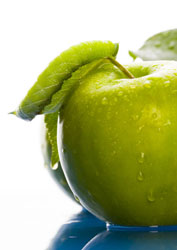Getting rid of the worm in your apple
The codling moth is the bane of the apple farmer. Its larvae burrow into the core of the apple, causing irreversible damage. Unfortunately, ridding apple orchards of codling moths requires the application of pesticides that can negatively impact other components of the ecosystem. Working with funding from the LIFE QUALITY Programme, a research consortium investigated the possibility of natural biological controls. The project coordinator, International Pheromone Systems Ltd (IPS), created a castellation trap with pheromones, special chemicals used to communicate between members of the same species. Specifically, pheromones are used to draw male codling moths into the trap, where they are infected and then returned to the wild. The aim is to create disruption in the local codling moth population, thereby limiting reproduction and subsequently the risk of infestation. The new traps were initially tested in a wind tunnel and then used in a number of field experiments in the United Kingdom and Spain. Fortunately, no side effects on other species were detected. However, the traps were not as effective as had been hoped in reducing the number of codling moths and subsequently apple losses. IPS and its partners are investigating alternatives with respect to the pathogen used to infect the male codling moths. In addition, the trap structure will be redesigned to enable trapping in addition to the original trap and release version. IPS has applied for patent protection for the new trap.



